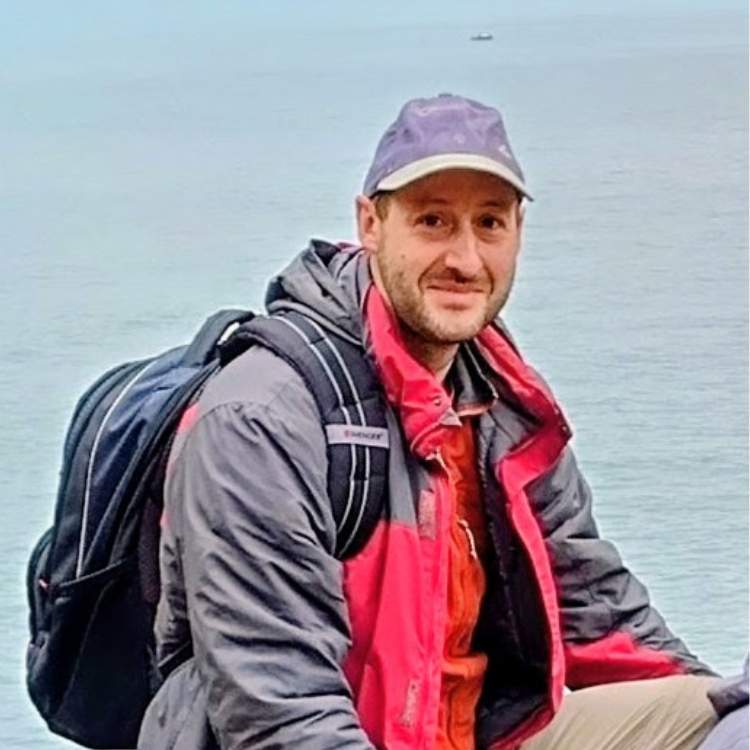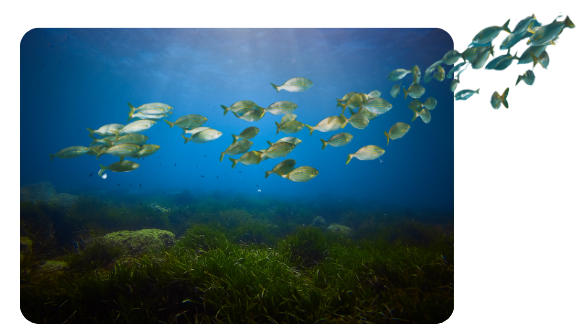Science Topic
Ocean Carbon Dioxide Removal (oCDR)
Ocean Carbon Dioxide Removal (oCDR) activities are designed to remove carbon dioxide (CO2) from the atmosphere using the marine environment and its chemical and biological processes.
The Role of Carbon Dioxide Removal (CDR) in Addressing Climate Change
To meet climate goals and address the issue of climate change effectively, there is general agreement that there needs to be a dramatic reduction in global greenhouse gas (GHG) emissions. Many sectors and industries will be required to radically alter their operations to reduce emissions of the GHG carbon dioxide (CO2) but this transformation to low-carbon operating will inevitably take time. As such, there has been a rapid increase in the exploration of alternative/complementary approaches, including Carbon Dioxide Removal (CDR) , while efforts to reduce CO2 emissions continue.
Read more about PML’s work in this area
The Importance of CDR in Achieving Climate Goals
CDR is explicitly included in the UNFCCC Paris Agreement as a means of contributing towards a net-zero future, although emissions reductions remain the key focus as CDR will only be effective if emissions are significantly reduced.
The ocean is already the largest carbon store on Earth. It is estimated to absorb over a quarter of CO2 emissions created by human activities and offers scope for CO2 removal. Building upon internationally recognised research and an extensive understanding of the marine environment, as well as the ecosystem services it supports, PML applies its expertise to help explore CDR initiatives provided by the marine environment, termed Ocean CDR or oCDR.
Ocean Carbon Dioxide Removal (oCDR) approaches include:
- Ocean fertilisation
Fertilizing nutrient-poor surface waters with nutrients, such as iron, phosphorus, nitrogen, or with naturally nutrient-rich water, can stimulate photosynthesis and “fix’ excess amounts of CO2 in living biomass of phytoplankton or macroalgae.
- Recovery of ocean and coastal ecosystems
Important coastal habitats, often referred to as Blue Carbon habitats, such as mangroves, macro-algae areas, tidal marshes and seagrass meadows, are reported to absorb and store significant amounts of carbon from the atmosphere and have been recognised for their potential in managing climate change. Protecting and restoring wider ecosystems has the benefit of providing a more resilient, healthy system.
- Ocean alkalinity enhancement
A chemical change in seawater through the addition of alkalinity using one of several mechanisms, including enhanced mineral weathering, or electrochemical or thermal reactions, that release alkalinity to the ocean, with the ultimate aim of removing CO2 from the atmosphere.
- Electrochemical approaches
Direct removal of CO2 from seawater or enhancement of the storage capacity of CO2 in seawater (e.g., in the form of ions or mineral carbonates) by manipulating seawater acidity or alkalinity, respectively.
These approaches will store carbon on different timescales depending on when and how they are carried out. For instance, ocean fertilisation in the surface waters will store carbon only on the order of years to decades, alkalinity enhancement may transfer carbon to the deep ocean where it could be stored on century timescales, and capturing carbon using electrochemical methods with storage in geological formations will lock carbon away for thousands of years. Knowledge of carbon transport and cycling around the ocean is therefore vital to understand the plausibility of these techniques. PML has several decades experience in ocean carbon cycle research.
Unraveling the Potential: Exploring the Impacts of oCDR Research
oCDR research is in its infancy and there are still many unanswered questions relating to the efficacy and wider impact of such activities, to which PML has the expert capabilities to help answer. The feasibility, uncertainty, risks, evaluation and decommissioning of different oCDR approaches all need to be assessed robustly. This is vital in order to understand and avoid unintended negative consequences on the local environment, but also inadvertent impacts upon carbon fluxes overall, which is an important consideration if initiatives are to be up-scaled in the future.
It is also vital to have an advanced understanding of the environment’s baseline to be able to monitor any changes that are caused by oCDR initiatives – an area in which PML’s expertise in long-term monitoring is invaluable.
Another aspect of oCDR in which PML is active is the development of meaningful stakeholder engagement activities. This is crucial in order to enable effective and sensitive co-development, ensuring all voices related to any initiative or approach are heard, and that stakeholder interests can be appropriately balanced.
Commercial oCDR Services
From PML Applications Ltd
For commercial oCDR services, delivered by PML Applications please also visit:
Carbon removal technologies, oCDR and nature-based solutions
PML Projects
Selected Publications
Cripps, Widdicombe, Spicer and Findlay (2013) Biological impacts of enhanced alkalinity in . 71: 190-198
Queirós, Ana M., Tait, Karen, Clark, James R., Bedington, Michael, Pascoe, Christine, Torres, Ricardo, Somerfield, Paul J., and Smale, Dan A.. 2023. “ Identifying and Protecting Macroalgae Detritus Sinks toward Climate Change Mitigation.” 33( 3): e2798.
Queirós, A.M., Stephens, N., Widdicombe, S., Tait, K., McCoy, S. J., Ingels, J., Rühl, S., Airs, R., Beesley, A., Carnovale, G., Cazenave, P., Dashfield, S., Hua, E., Jones, M., Lindeque, P., McNeill, C. L., Nunes, J., Parry, H., Pascoe, C., Widdicombe, C., Smyth, T., Atkinson, A., Krause-Jensen, D. , and Somerfield, P. J.. 2019. Connected macroalgal-sediment systems: blue carbon and food webs in the deep coastal ocean. 89( 3):e01366.
Polimene, L; Torres, R; Powley, HR; Bedington, M; Juhls, B; Palmtag, J; Strauss, J; Mann, PJ. 2022 . , 160 (3). 289-300.
Fairall, CW; Yang, M; Brumer, SE; Blomquist, BW; Edson, JB; Zappa, CJ; Bariteau, L; Pezoa, S; Bell, TG; Saltzman, ES. 2022 . , 9.
Resources and Links
Related news
- SeaCURE: https://www.pml.ac.uk/News/%C2%A33-million-for-new-carbon-capture-project-and-pilo
- Amazon Wind/Seaweed Farm: https://www.pml.ac.uk/News/PML-leads-the-science-on-the-world%E2%80%99s-first-co-loca
- TaliskerxParley: https://parley.tv/journal/what-a-scientist-wants-you-to-know-about-seaweed
- GOA-ON/NEA-OA: https://www.pml.ac.uk/Science/Projects/North-East-Atlantic-hub-of-the-Global-Ocean-Acidif
- https://www.washingtonpost.com/business/energy/2023/05/03/the-climate-crisis-take-care-before-enlisting-the-oceans-as-carbon-sinks/d5825a5a-e97e-11ed-869e-986dd5713bc8_story.html
- https://www.washingtonpost.com/business/energy/2023/03/30/what-s-sargassum-bloom-florida-s-seaweed-blob-may-offer-a-climate-solution/098e690c-cebc-11ed-8907-156f0390d081_story.html.
Capabilities
- Long-term marine monitoring and analysis
- Baseline assessment of marine biogeochemistry
- Marine ecosystem services expertise
- Stakeholder engagement
- Ocean climate-change modelling spatial meta-analysis






























